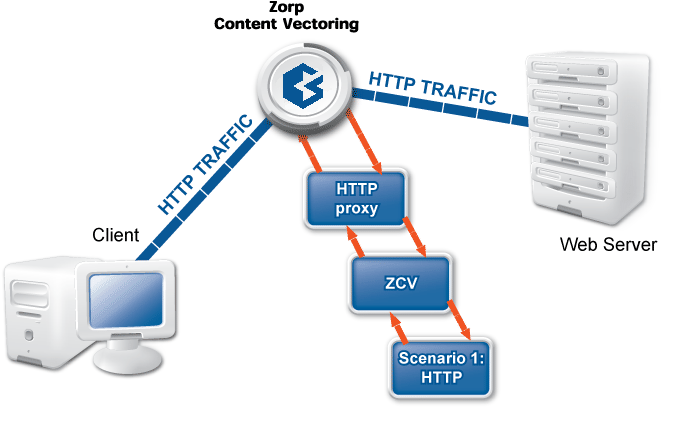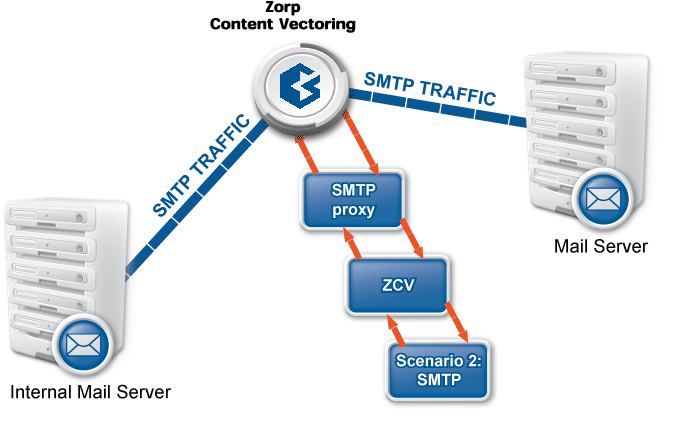ZCV is not a content vectoring engine, it is a framework to manage and configure various third-party content vectoring modules (engines) from a uniform interface. Zorp uses these modules to filter the traffic. These modules run independently from Zorp. They do not even have to run on the same machines. Zorp can send the data to be inspected to these modules, along with configuration parameters appropriate for the scenario. For example, a virus filtering module can be used to inspect all files in the traffic, but different parameters can be used to inspect files in HTTP downloads and e-mail attachments. Also, different scenarios can use a different set of modules for inspecting the traffic. Using the above example, HTTP traffic can be inspected with a virus filter, a content filter, and all client-side scripts can be removed. E-mails can be scanned for viruses using the same virus filtering module (but possibly with stricter settings), and also inspected by a spam filtering module.
The interaction of Zorp and ZCV takes place as follows:
A Zorp proxy can send data for further inspection to a ZCV rule group.
A rule group is used to define a scenario (using a set of router rules).
The router rules of the scenario are condition – action pairs that determine how a particular object should be inspected. This decision is based on meta-information about the traffic or objects received from Zorp and on information collected by ZCV.
The condition can be any information that Zorp/ZCV can parse, for example, the client's IP address, the MIME-type of the object, and so on.
The action is either a default action (such as
ACCEPTorREJECT), or a scanpath — a list of content vectoring module instances (the modules and their settings corresponding to the scenario) that will inspect the traffic. Rule groups have a scanpath configured as default, but the routers in the group can select a different scanpath for certain conditions.
The examples demonstrated on Figure 2.5, Content vectoring scenarios in ZCV can be translated to the ZCV terms defined in the previous paragraph as follows:
There are two rule groups (scenarios) defined, one for HTTP traffic, one for SMTP.
The Router rules formulate a scanpath in the HTTP rule group.
The scanpath includes module instances of a virus filtering, a content filtering, and an HTML module that are configured to remove all scripts.
This is only a basic example, but further router rules can be used to optimize the decisions. For example, it is unreasonable to remove client-side scripts in non-HTML files that are downloaded, and so on. Similarly, another rule group corresponds to the SMTP scenario, with a scanpath including a virus filtering and a spam filtering module instance.
The whole process is summarized in the following procedure.
Published on May 30, 2024
© BalaSys IT Ltd.
Send your comments to support@balasys.hu





